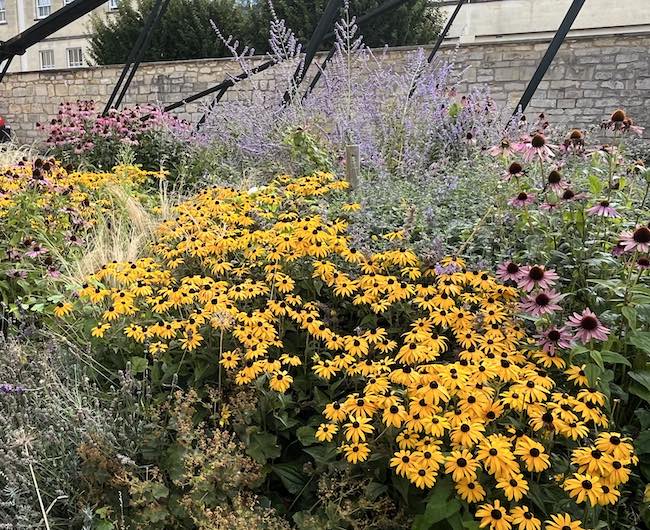
Creating a garden or planting scheme that supports bees and other pollinating insects is crucial for the environment, and it’s a common misconception that such gardens must only include native plants, often perceived as unsightly, like nettles. In reality, a diverse range of attractive, non-native perennials can be equally beneficial for these vital insects.
Understanding the Needs of Pollinators
Pollinators like bees, butterflies, and other insects require two primary resources from plants: nectar and pollen. Nectar serves as a vital energy source, while pollen provides proteins and fats. To attract a variety of pollinators, gardens should feature plants that bloom at different times, ensuring a consistent food supply throughout the growing seasons.
The Role of Non-Native Plants
Non-native plants, often more aesthetically pleasing than some native species, can still offer essential nutrients to pollinators. For example:
- Salvia (Sage): A member of the mint family, not the nettle family, salvia is a fantastic option. It produces nectar-rich flowers, attracting bees and butterflies. Salvia comes in various colours, enhancing the visual appeal of any garden.
- Lavender: With its fragrant, nectar-rich flowers, lavender is a favourite among bees and other insects. It’s also a hardy plant that adds both colour and aroma to gardens.
- Echinacea (Coneflower): Known for its medicinal properties, Echinacea is also a popular choice for pollinators. Its large, daisy-like flowers are particularly attractive to butterflies.
- Foxgloves: While being a biennial, Foxgloves are excellent for bees. Their bell-shaped flowers are perfect for bees to crawl into and feed.
- Cosmos: Easy to grow, these flowers are a hit with both bees and butterflies. Their open flowers make it easy for insects to access pollen and nectar.
- Rudbeckia Goldsturm (Black-Eyed Susan): This perennial is renowned for its bright, golden-yellow flowers with a distinct black center. It’s a hardy plant that thrives in a variety of conditions and is particularly loved by bees and butterflies. The long blooming period of Rudbeckia Goldsturm ensures that pollinators have a consistent source of nectar and pollen throughout the summer and into early fall.
Balancing Aesthetics and Function
In designing a pollinator-friendly garden, aesthetics don’t need to be sacrificed. A well-planned garden can be both beautiful and beneficial. Mixing flowering plants with various textures, colours, and heights not only creates visual interest but also caters to different types of pollinators.
The Importance of Plant Diversity
Diversity in planting not only supports a wider range of pollinators but also contributes to the ecological balance, reducing the need for pesticides. A variety of plants ensures resilience against pests and diseases, fostering a healthier garden
A garden designed to support bees and other insects doesn’t have to rely solely on native plants. Non-native perennials like Salvia, Lavender, Echinacea, Foxgloves, and Cosmos can provide essential resources for pollinators while maintaining an aesthetically pleasing landscape. Embracing plant diversity, both native and non-native, is key to creating a thriving, pollinator-friendly environment.





















